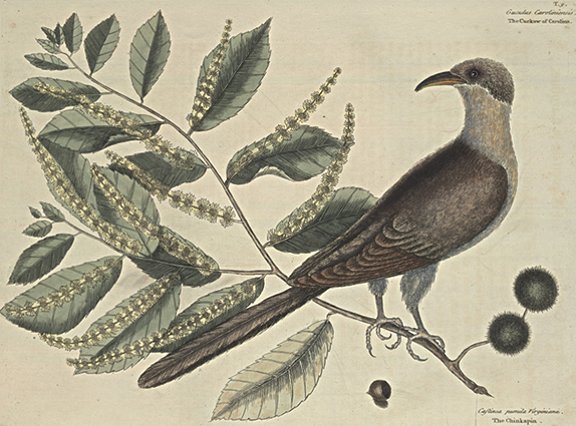Plate Number: I 9Cuculus Caroliniensis: The Cuckow of Carolina Is about the size of a Black-bird: the Bill a little hooked and sharp; the upper Mandible black; the under, yellow: the large Wing-feathers reddish; the rest of the Wing, and all the upper part of the Body, Head and Neck, ash-colour: all the under part of the Body, from the Bill to the Tail, white: the Tail long and narrow, composed of six long and four Shorter feathers; the two middlemost ash-colour, the rest black, with their ends white; their Legs short and strong, having two back-toes, and two before. Their Note is very different from ours, and not so remarkable as to be taken notice of. It is a solitary Bird, frequenting the darkest recesses of woods and shady thickets. They retire at the approach of winter. Castanea pumila Virginiana, fructu racemoto parvo in singulis capsulis echinatis unico: The ChinkapinIt is a Shrub which seldom grows higher than sixteen feet, and usually not above eight or ten: the Body commonly eight or ten inches thick, and irregular; the Bark rough and scaly; the Leaves are serrated, and grow alternately, of a dark green, their back-sides being of a greenish white: at the joints of the leaves shoot forth long spikes of whitish flowers, like those of the common Chesnut, which are succeeded by Nuts of a conick shape, and the size of a Hasel-nut; the Shell, which incloses the Kernel, is of the colour and consistence of that of a Chesnut, inclosed in a prickly burr, usually five or six hanging in a cluster. They are ripe in September. These Nuts are sweet, and more pleasant than the Chesnut; of great use to the Indians, who for their Winter's provision lay them up in store. |